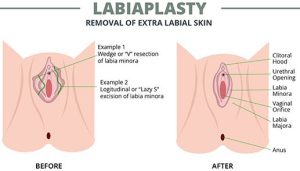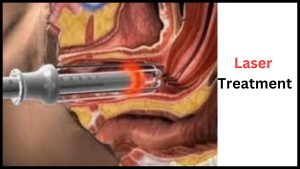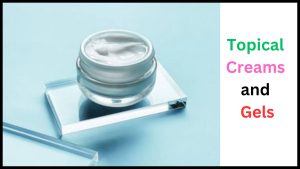
Imagine being able to achieve labia reduction without undergoing surgery.
It may sound too good to be true, but with advancements in non-invasive procedures, this is now a possibility.
This article explores the various methods available for labia reduction without surgery, providing you with a comprehensive overview of the options at your fingertips.
Whether you’re seeking a less invasive solution for cosmetic or functional reasons, there is a range of alternatives to explore that can help you achieve your desired outcome.
From laser treatments to radiofrequency therapy, discover the cutting-edge techniques that can offer you a natural and safe approach to labia reduction.
Say goodbye to the worries and uncertainties of surgical interventions and embrace the potential of these nonsurgical alternatives.
Table of Contents
What is Labia Reduction?
Labia reduction, also known as labiaplasty, is a procedure that aims to reduce the size and modify the appearance of the labia minora, the inner lips of the vulva.
It is a common concern for many women who may feel discomfort, self-consciousness, or irritation due to enlarged or asymmetrical labia.
Labia reduction can be performed surgically or using non-surgical methods, providing women with options to address their concerns and improve their overall quality of life.

Understanding the Labia
Before delving into the various methods of labia reduction, it is important to understand the anatomy of the labia.
The labia consist of two sets of skin folds, the labia majora (outer lips) and the labia minora (inner lips).
The labia minora are the focus of labia reduction procedures.
They can vary in size, shape, and color from woman to woman and may change in appearance over time due to factors such as pregnancy, childbirth, or aging.
Labia Size and Concerns
The size of the labia minora can vary significantly among different individuals.
While there is a wide range of what is considered normal, some women may experience physical discomfort, emotional distress, or difficulties with sexual intercourse due to enlarged labia.
Disproportionately large or asymmetrical labia can cause irritation, chafing, and pain, particularly during physical activities or while wearing tight-fitting clothing.
It is important to note that labia size or appearance does not define a woman’s femininity or sexuality.
Labia reduction is a personal choice driven by individual concerns and desires.

Benefits of Labia Reduction
The decision to undergo labia reduction can offer various benefits to women who are experiencing discomfort or dissatisfaction with the size or shape of their labia.
Some potential benefits include:
1. Improved comfort
2. Increased self-confidence
3. Improved sexual function
4. Enhanced clothing options
1. Improved comfort: By reducing the size of the labia, women may experience relief from physical discomfort, irritation, and chafing caused by enlarged labia.
2. Increased self-confidence: Labia reduction can help women feel more confident and comfortable in their own bodies, enhancing their overall self-esteem and body image.
3. Improved sexual function: Reshaping the labia can often lead to improved sexual function and satisfaction, allowing women to feel more comfortable and enjoy their intimate experiences.
4. Enhanced clothing options: Enlarged or asymmetrical labia can make it challenging to wear certain types of clothing, such as tight-fitting jeans or swimsuits.
Labia reduction can provide women with a greater range of clothing options and the freedom to wear what they desire.

Non-Surgical Methods for Labia Reduction
While surgical labiaplasty is a well-known option for labia reduction, there are also non-surgical methods available for women seeking a non-invasive approach.
These methods may offer alternative solutions for those who prefer to avoid surgery or are not suitable candidates for surgical intervention.
The following non-surgical methods are commonly used for labia reduction:
1. Vaginal Tightening Exercises
2. Laser Treatment
3. Radiofrequency
4. Topical Creams and Gels
1. Vaginal Tightening Exercises
Vaginal tightening exercises, also known as pelvic floor muscle exercises, are a non-surgical approach to improve the tone and strength of the pelvic floor muscles.
These exercises primarily target the muscles supporting the vagina, urethra, and rectum.
By strengthening these muscles, women may experience improved vaginal tightness and overall muscle tone, potentially leading to a reduction in the size and appearance of the labia minora.
2. Laser Treatment
Laser treatment, using a specialized laser device, is another non-surgical method used for labia reduction.
This procedure involves the use of laser energy to selectively target and remove excess tissue from the labia minora.
The laser works by precisely ablating the unwanted tissue, promoting collagen remodeling, and tightening of the treated area.
3. Radiofrequency
Radiofrequency treatment is a non-surgical method that utilizes controlled radiofrequency energy to stimulate collagen production and tissue remodeling.
This technology works by delivering heat to the targeted area, triggering the production of new collagen fibers.
Radiofrequency treatment can be used to selectively reduce the size and tighten the labia minora, providing women with improved comfort and aesthetics.
4. Topical Creams and Gels
Topical creams and gels are non-invasive options that can be used for labia reduction.
These products typically contain ingredients that promote collagen synthesis, tighten the skin, and improve elasticity.
When applied regularly and as directed, these creams and gels may help to reduce the size and appearance of the labia, resulting in a more desirable shape and texture.

Vaginal Tightening Exercises
Exercises to Strengthen Pelvic Floor Muscles
One of the primary non-surgical methods for labia reduction is through exercises that strengthen the pelvic floor muscles.
These exercises primarily target the muscles responsible for supporting the vagina, urethra, and rectum.
Some common exercises that can help strengthen the pelvic floor muscles include:
-
Kegel Exercises for Labia Tightening
Kegel exercises, named after gynecologist Dr. Arnold Kegel, are a popular form of exercise for strengthening the pelvic floor muscles.
These exercises involve contracting and relaxing the muscles that control urination.
To perform Kegel exercises:
1. Identify the correct muscles by attempting to stop the flow of urine mid-stream. The muscles you use to do this are your pelvic floor muscles.
2. Contract these muscles for a few seconds, then relax for a few seconds.
3. Repeat this exercise several times, gradually increasing the duration and intensity of the contractions over time.
Kegel exercises can be performed anywhere and anytime, making them an easily accessible and practical option for strengthening the pelvic floor muscles.
-
Other Exercises and Techniques
In addition to Kegel exercises, there are other exercises and techniques that can help strengthen the pelvic floor muscles and potentially contribute to labia reduction.
Some examples include:
1. Squats
2. Bridge pose
3. Pilates exercises
1. Squats: Squats can help strengthen the lower body muscles, including the pelvic floor muscles.
Performing squats with proper form and technique can provide overall muscle toning and improve blood circulation to the genital area.
2. Bridge pose: This yoga pose targets the glutes, hips, and pelvic floor muscles.
It involves lying on your back, bending your knees, and lifting your hips off the ground.
Bridge pose can help strengthen the pelvic floor muscles and improve their overall function.
3. Pilates exercises: Pilates exercises often focus on core strength and stability, which indirectly helps strengthen the pelvic floor muscles.
Exercises such as the pelvic tilt and the bridge can be particularly beneficial for pelvic floor muscle strengthening.
Regular practice of these exercises, under the guidance of a healthcare professional or certified instructor, can help improve the strength and tone of the pelvic floor muscles, potentially leading to labia reduction.

Laser Treatment
How Laser Treatment Works
Laser treatment for labia reduction involves the use of a specialized laser device that emits intense light energy pulses.
This laser energy is selectively absorbed by the unwanted tissue on the labia minora, causing it to vaporize or coagulate.
The surrounding healthy tissue remains unaffected.
Benefits and Effectiveness
Laser treatment offers several benefits for labia reduction.
Some of the advantages of laser treatment include:
1. Non-invasive
2. Precision
3. Minimal discomfort
4. Tissue remodeling
1. Non-invasive: Laser treatment is a non-surgical method, meaning there is no need for incisions or anesthesia.
This makes it a less invasive option with fewer risks and a faster recovery time compared to surgical procedures.
2. Precision: The laser device allows for precise targeting of the tissue, ensuring that only the excess labial tissue is treated while preserving the surrounding healthy tissue.
3. Minimal discomfort: Laser treatment is generally well-tolerated, with minimal discomfort reported during the procedure.
Some clinics may apply a topical anesthetic cream to the treatment area to further reduce any potential discomfort.
4. Tissue remodeling: The laser energy stimulates collagen production and remodeling, which can lead to improved skin tone and tightness in the treated area, resulting in a reduction in the size and appearance of the labia minora.
The effectiveness of laser treatment for labia reduction can vary depending on individual factors such as the initial size of the labia and the specific laser technology used.
Multiple sessions may be required to achieve the desired results.
Number of Sessions Required
The number of laser treatment sessions required for labia reduction can vary depending on the individual’s goals, the severity of the condition, and the response to treatment.
In some cases, significant improvement can be achieved with just one session, while others may require multiple sessions spaced several weeks apart to achieve optimal results.
It is essential to discuss your expectations with a qualified practitioner, who can provide guidance on the recommended treatment course for your specific situation.
Potential Side Effects and Risks
While laser treatment for labia reduction is generally considered safe, there are certain potential side effects and risks associated with the procedure.
These may include:
1. Mild discomfort or pain during or after the treatment, which can be managed with over-the-counter pain relief medication.
2. Temporary swelling and redness in the treated area, which typically resolves within a few days.
3. Temporary changes in sensation, such as numbness or hypersensitivity, which usually subside within a few weeks.
4. Rarely, infection or scarring may occur, although these risks are minimized when the procedure is performed by a qualified practitioner using appropriate hygiene and safety protocols.
It is crucial to discuss the potential risks and complications associated with laser treatment with your healthcare provider and ensure that you are a suitable candidate for the procedure before proceeding.

Radiofrequency
Understanding Radiofrequency Treatment
Radiofrequency treatment is a non-surgical method used for labia reduction that utilizes controlled radiofrequency energy to induce collagen production and tissue remodeling.
The procedure involves delivering precise heat energy to the targeted area, stimulating the body’s natural healing response, and promoting the formation of new collagen fibers.
This results in a tightening and rejuvenating effect on the labia minora, leading to a reduction in size and improved aesthetics.
Procedure and Mechanism
During a radiofrequency treatment session, the healthcare provider will use a specialized device that emits radiofrequency energy.
The device is gently applied to the labial tissue, delivering the radiofrequency waves into the deeper layers of the skin.
The controlled heat energy generated by the radiofrequency device causes tissue contraction and stimulates collagen synthesis, leading to the desired tightening effect.
Expected Results
Radiofrequency treatment for labia reduction can yield noticeable improvements in the size and appearance of the labia minora.
The stimulation of collagen production can lead to enhanced skin tone, increased tightness, and decreased laxity in the treated area.
These effects typically develop gradually over time as the newly formed collagen strengthens and remodels the tissue.
Considerations and Risks
While radiofrequency treatment for labia reduction is considered safe and well-tolerated for most individuals, it is important to consult with a qualified healthcare provider to determine if you are a suitable candidate for the procedure.
Some factors to consider include:
1. Medical history
2. Treatment expectations
3. Number of sessions
4. Potential side effects
1. Medical history: The healthcare provider will assess your medical history to identify any underlying conditions or contraindications that may impact the safety or effectiveness of radiofrequency treatment.
Certain medical conditions or medications may make you unsuitable for the procedure.
2. Treatment expectations: It is essential to have realistic expectations for the results of radiofrequency treatment.
The degree of improvement can vary depending on individual factors such as the initial size and shape of the labia, as well as the body’s response to treatment.
3. Number of sessions: Multiple sessions of radiofrequency treatment may be required to achieve optimal results.
The healthcare provider will provide guidance on the recommended treatment course for your specific needs.
4. Potential side effects: Although radiofrequency treatment is generally considered safe, there are potential side effects and risks to be aware of, including mild discomfort, redness, swelling, or temporary changes in sensation.
These are usually temporary and resolve on their own within a few days or weeks.
Discussing these considerations with a qualified healthcare provider will help ensure that radiofrequency treatment is the right choice for you and that the potential benefits outweigh the risks.

Topical Creams and Gels
Overview of Topical Solutions
Topical creams and gels are non-surgical options that can be applied externally to the labia minora to promote tissue tightening and reduction in size.
These products often contain ingredients known for their skin-tightening and collagen-boosting properties.
When used regularly and as directed, topical creams and gels can help improve the tone and texture of the labia, potentially leading to a more desirable appearance.
Ingredients and Their Effectiveness
Topical creams and gels designed for labia reduction may contain various ingredients that are intended to promote tissue tightening and collagen synthesis.
Some common ingredients and their effectiveness include:
1. Hyaluronic acid
2. Vitamin C
3. Aloe vera
4. Glycerin
1. Hyaluronic acid: Hyaluronic acid is a naturally occurring substance in the body, known for its hydrating and plumping effects.
When applied topically, hyaluronic acid can help improve the moisture content and overall appearance of the labia.
2. Vitamin C: Vitamin C is an antioxidant that plays a vital role in collagen synthesis.
Topical creams containing vitamin C can help stimulate collagen production, leading to improved skin tightness and elasticity.
3. Aloe vera: Aloe vera has soothing and hydrating properties and can help alleviate irritation and inflammation in the labial area.
It may contribute to improved overall comfort and appearance.
4. Glycerin: Glycerin is a humectant that attracts and retains moisture in the skin.
By applying glycerin-based creams or gels, the labial area may become better moisturized, resulting in improved skin texture and tone.
These are just a few examples of ingredients that may be found in topical creams and gels for labia reduction.
It is important to carefully read the product labels and consult with a healthcare professional if you have any specific concerns or allergies.
Application and Usage Instructions
Topical creams and gels for labia reduction should be applied according to the product’s instructions and individual needs.
Generally, these products are applied externally to the labia minora after cleansing the area thoroughly.
It is essential to massage the product gently into the skin until fully absorbed.
Regular and consistent use is typically recommended for optimal results.
If any irritation or discomfort occurs, it is advisable to discontinue use and consult with a healthcare professional.

Consulting a Professional
Importance of Professional Guidance
When considering any form of labia reduction, whether surgical or non-surgical, it is crucial to seek professional guidance from a qualified healthcare provider or practitioner.
They have the necessary knowledge, experience, and expertise to assess your specific concerns, examine your condition, and recommend suitable treatment options.
Their guidance can help you make an informed decision and ensure that you select the most appropriate method for your needs.
Selecting a Qualified Practitioner
When searching for a healthcare provider or practitioner offering non-surgical labia reduction treatments, it is important to consider their qualifications, experience, and reputation.
Some factors to consider when selecting a practitioner include:
1. Certification and credentials
2. Experience
3. Patient testimonials
4. Consultation process
1. Certification and credentials: Ensure that the practitioner has the necessary certification and credentials to perform labia reduction treatments.
Look for qualifications from reputable organizations and professional bodies.
2. Experience: Inquire about the practitioner’s experience with non-surgical labia reduction treatments.
Ask how many procedures they have performed and inquire about their success rates.
3. Patient testimonials: Reading reviews and testimonials from previous patients can provide valuable insights into the practitioner’s skills, professionalism, and patient satisfaction.
4. Consultation process: A thorough consultation process is essential to discuss your concerns, expectations, and any potential risks or limitations associated with the treatment.
Choose a practitioner who takes the time to listen to your needs and provides detailed information.
Discussing Concerns and Expectations
During your consultation with a healthcare provider or practitioner, it is important to openly discuss your concerns, expectations, and desired outcomes regarding labia reduction.
This allows the practitioner to assess your individual situation, provide personalized recommendations, and set realistic expectations.
Open communication is key to ensure that you and the practitioner are on the same page and working towards a shared goal.

Understanding the Risks and Limitations
Potential Risks and Complications
While non-surgical methods for labia reduction are generally considered safe, it is important to understand that, like any medical procedure or treatment, they come with potential risks and limitations.
Some potential risks and complications associated with non-surgical labia reduction methods include:
1. Discomfort or pain
2. Temporary side effects
3. Unsatisfactory results
4. Need for repeat treatments
1. Discomfort or pain: Although non-surgical methods are typically less invasive than surgical options, some individuals may experience mild discomfort, pain, or sensitivity during or after the treatment.
This can usually be managed with over-the-counter pain relief medication.
2. Temporary side effects: Temporary side effects such as swelling, redness, irritation, or changes in sensation may occur following non-surgical treatments.
These effects are usually temporary and resolve on their own within a few days or weeks.
3. Unsatisfactory results: Non-surgical methods may not achieve the same degree of labia reduction or aesthetic improvements as surgical labiaplasty.
It is important to have realistic expectations and discuss your desired outcome with your healthcare provider.
4. Need for repeat treatments: Non-surgical methods often require multiple treatment sessions to achieve the desired results.
This can result in additional costs and time commitments compared to surgical options.

Limitations of Non-Surgical Methods
While non-surgical methods for labia reduction can be effective for some individuals, it is important to recognize their limitations.
Non-surgical methods may not be suitable for individuals with significantly enlarged or asymmetrical labia, as surgical intervention may be more appropriate to achieve the desired results.
Additionally, while non-surgical methods can provide improvements in labia appearance and comfort, they may not address underlying anatomical issues or functional concerns.
Realistic Expectations
Maintaining realistic expectations is crucial when considering any form of labia reduction.
Non-surgical methods may provide noticeable improvements in the size, shape, and appearance of the labia, but they may not achieve the same degree of change as surgical options.
It is important to discuss your expectations with a qualified healthcare provider to ensure that the chosen method aligns with your desired outcome and goals.

Ongoing Care and Maintenance
Post-Treatment Care Instructions
Regardless of the chosen non-surgical method for labia reduction, following post-treatment care instructions is essential to ensure optimal healing and results.
Some general post-treatment care instructions may include:
1. Keeping the treatment area clean and dry
2. Avoid strenuous activities
3. Wearing loose-fitting clothing
4. Avoiding sexual activity
1. Keeping the treatment area clean and dry: It is important to maintain proper hygiene by gently washing the area with a mild, fragrance-free cleanser and patting it dry after each cleansing.
2. Avoid strenuous activities: It is advisable to avoid strenuous activities or exercises that may put excessive pressure or strain on the treatment area.
3. Wearing loose-fitting clothing: Opt for loose-fitting underwear and clothing that allows the treated area to breathe and heal without unnecessary friction or pressure.
4. Avoiding sexual activity: It is typically recommended to abstain from sexual activity for a specific period of time following non-surgical labia reduction treatments.
Your healthcare provider will provide specific guidelines based on your individual treatment.
Maintaining Results
To maintain the results of non-surgical labia reduction, it is essential to adopt healthy habits and practices.
Some tips for maintaining the results include:
1. Maintaining a healthy weight
2. Practicing good hygiene
3. Moisturizing the area
4. Regular follow-up visits
1. Maintaining a healthy weight: Fluctuations in weight can impact the appearance and size of the labia. Maintaining a stable and healthy weight can help preserve the desired results.
2. Practicing good hygiene: Regular cleansing of the labial area with gentle, fragrance-free cleansers can help maintain cleanliness and prevent irritation or infection.
3. Moisturizing the area: Applying a designated moisturizer or recommended hydrating products to the labia can help promote the overall health and appearance of the tissue.
4. Regular follow-up visits: Follow-up visits with your healthcare provider can help monitor your progress, address any concerns or questions, and ensure long-term satisfaction with the results of non-surgical labia reduction.
Follow-Up Visits
Following non-surgical labia reduction treatments, it is common to have follow-up visits with your healthcare provider to assess the healing process, monitor results, and address any concerns or questions you may have.
These visits provide an opportunity to discuss your satisfaction with the treatment outcomes and make any necessary adjustments or recommendations.
Alternative Options: Surgical Labiaplasty
When Surgery is Recommended
Surgical labiaplasty is another option for labia reduction and is typically recommended for individuals with significantly enlarged or asymmetrical labia that may not be effectively addressed through non-surgical methods alone.
Surgical labiaplasty involves the removal of excess tissue and reshaping the labia minora to achieve the desired size and shape.
Procedure and Recovery
The surgical labiaplasty procedure involves making incisions in the labia minora, removing excess tissue, and suturing the incisions to achieve the desired appearance.
The specific surgical technique used may vary depending on individual factors and the surgeon’s preference.
Following surgical labiaplasty, the recovery period typically involves some discomfort, swelling, and bruising.
It is common to have a period of restricted physical activity, including abstaining from sexual activity, to allow for proper healing.
Your surgeon will provide detailed post-operative care instructions to ensure a smooth recovery process.
Comparing Surgical and Non-Surgical Methods
When deciding between surgical and non-surgical labia reduction methods, it is important to consider your individual concerns, preferences, and goals.
Non-surgical methods offer the advantage of minimal invasiveness, faster recovery, and fewer potential risks.
However, surgical labiaplasty may be more suitable for individuals with significant anatomical concerns or those seeking more dramatic and long-lasting results.
It is advisable to consult with a qualified healthcare provider or practitioner who can assess your specific situation and provide personalized recommendations based on your needs and expectations.
Conclusion:
In conclusion, labia reduction is a personal choice driven by individual concerns and desires.
Non-surgical methods offer viable options for women seeking to address discomfort or dissatisfaction with the size or appearance of their labia.
Vaginal tightening exercises, laser treatment, radiofrequency, and topical creams and gels are all non-invasive approaches that can provide improvements in comfort, aesthetics, and sexual function.
It is essential to consult with a qualified healthcare provider or practitioner to discuss your concerns, understand the risks and limitations, and determine the most appropriate method for your needs.
With proper care, ongoing maintenance, and realistic expectations, non-surgical labia reduction methods can help women achieve enhanced comfort, confidence, and overall well-being.
